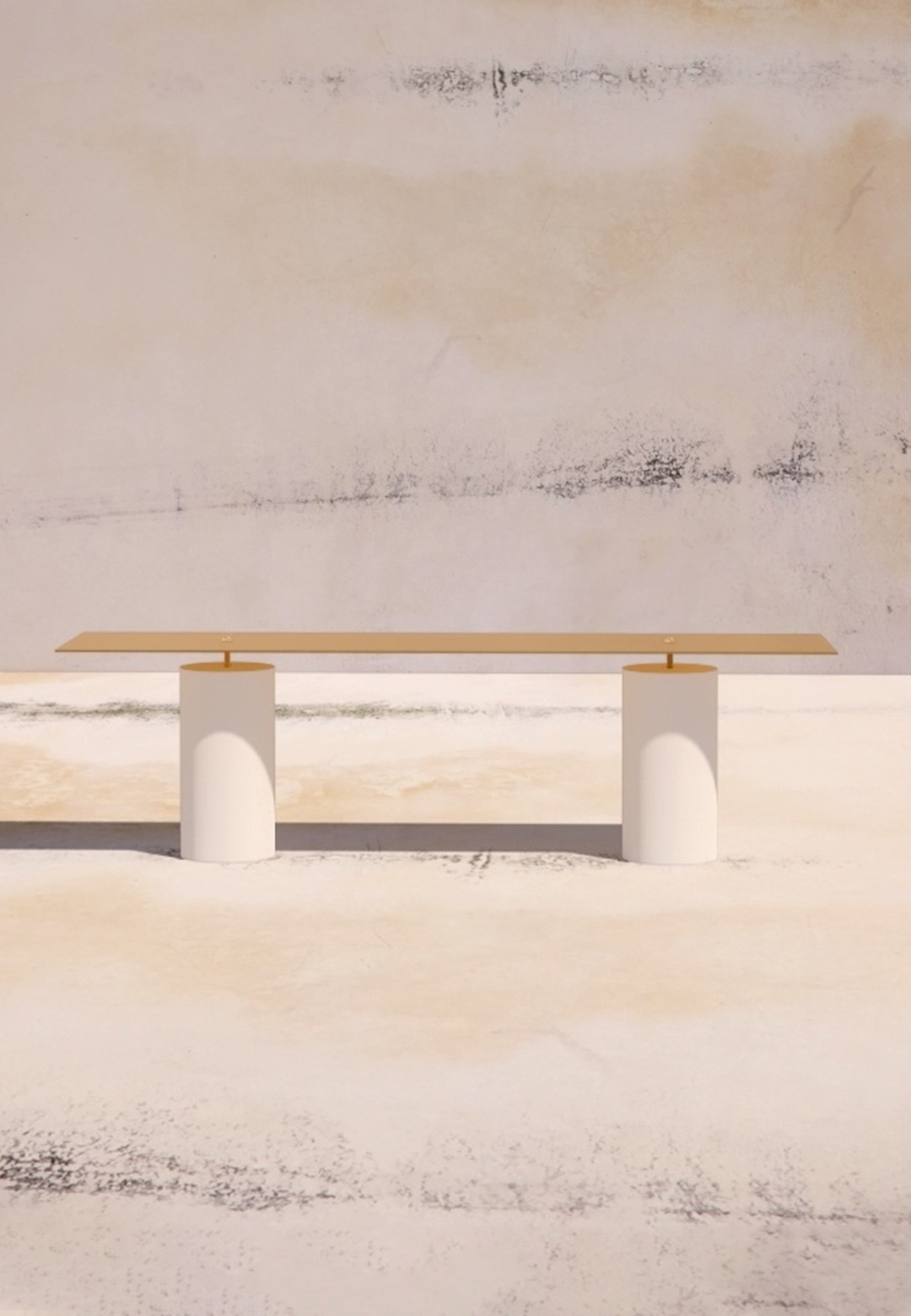The intrinsic bond between humans and nature beckons us to acknowledge the stewardship of a landscape that is both vital and sublime—a poignant reminder of our humble yet conscientious place in life. Embodying this spirit of unity and reverence, OMNIA, Latin for ‘all’ or ‘everything’, debuts at Milan Design Week 2025 at Alcova’s Villa Bagatti Valsecchi. Presented by Brooklyn-based architecture studio and collectible design gallery, ZAROLAT, the design exhibition coalesces the works of six international designers and artists.
Through an assemblage of 13 intriguing sculptural pieces crafted from ‘raw, reclaimed scrap and biological materials’, OMNIA reverberates Alcova’s philosophy of nature and regeneration. “Foregrounding adventurous manipulations of materials, this dynamic display invites contemplation of the boundaries between contemporary art and design, the interaction of unexpected combinations and humans’ place within the natural world,” outlines the collection’s press note.
Helmed by Turkish architect and designer Zeynep Arolat, ZAROLAT’s second furniture collection brings forth a comprehensive discourse between structure and materiality. The oak-and-copper Simple Chair by Arolat epitomises minimalism with its unembellished, geometrically ordered and pared-back form—a striking antithesis to pretentious complexity. Meanwhile, the side tables from the Mirror Series juxtapose sleek metal surfaces and exposed hardware that accentuate structural integrity and redefine conventional production methods. Each piece is meticulously crafted by Turkish artisans, reflecting the furniture designer’s allegiance to innovation and the artful marriage of function with compelling forms.
Florence-based multi-disciplinary designer Giulia Archimede channels her deep-rooted passion for nature, art and craftsmanship into Sol, an arc-shaped light sculpture traversing emptiness and illumination. Forged from onyx and amber glass and finely blown by revered Venetian masters, the lighting design gracefully embodies Archimede’s spiritual design philosophy. She informs, “Like the star that infuses life into everything and like the first note on the staff, the pivot of all the music that will come after. Sol is inspired by that centre within us that is emptiness and light.” This ‘illuminated alcove’ celebrates the ephemeral qualities of light and shadow while commemorating the lighting designer’s fidelity to infuse everyday spaces with profound, elemental beauty.
Further, Italian artist Edoardo Cozzani’s transformation of red marble modules into three striking Vessels, which are column-like side tables combined with fused glass and aluminium foil, bear witness to the impermanence and endurance of human intervention. He states, “This is how human waste may eventually become an artefact, part of the geological record of the future, highlighting the enduring impact of our collective actions.”
Additionally, the lamp designs by Cozzani—Pupae: Claymene 01 and Calymene 02—are cast as a series of metal mesh and glass lighting pieces that evoke metamorphosis and contamination.
A sculptural side table unites with a resilient yet organic mycelium base in Hungarian architect and artist Kamilla Csegzi’s exhibit Picchu at OMNIA. Mycelium with its delicate, self-organising network is cultivated into a structured yet unpredictable framework complemented by a prism-like, kiln-cast glass that amplifies its luminosity. Through Picchu, Csegzi articulates a dialogue between “the living and the inert, the controlled and the chaotic, the raw and refined,” states the press note.
Interrogating the interplay between traditional craft and modern technology, Istanbul-based contemporary artist Defne Önen weaves organic clay vases, Rhythm 01 and Rhythm 02, for the design fair. “I’ve been exploring how to capture the fluidity of fibre arts and natural forms—like the folds of leaves or the way water moves—within the rigid structure of fired clay,” Önen proclaims. Drawing on her extensive experience in lighting design, fabrication and conservation, the ceramicist cultivates a dynamic tension within her sculptural art, where the rhythmic coils and braided rope-like forms evoke the choreography of nature while asserting a balance between movement and stillness.
“In an age where technology numbs our senses, Lisa Sacco’s work demands an awakening—a return to touch, weight and spatial awareness,” the curator explains in the press statement. Expanding on her visionary Vital Friction: Sensory Objects series, the New York and Brooklyn-based furniture designer harnesses the latent potential of scrap steel and blown glass to conceive minimalist compositions that serve as ‘quiet monoliths’ in the sensory-saturated world. Characterised by the deliberate interplay of contrast and restraint, her experimental sculptural designs challenge conventional perceptions by recalibrating the connection to space and prompting a tactile engagement that lingers well beyond the initial encounter.
Keep up with STIR’s coverage of Milan Design Week 2025, where we spotlight the most compelling exhibitions, presentations and installations from top studios, designers and brands. Dive into the highlights of Euroluce 2025 and explore all the design districts—Fuorisalone, 5Vie, Brera, Isola, Durini, and beyond—alongside the faceted programme of Salone del Mobile.Milano this year.






 Sign in with email
Sign in with email










What do you think?